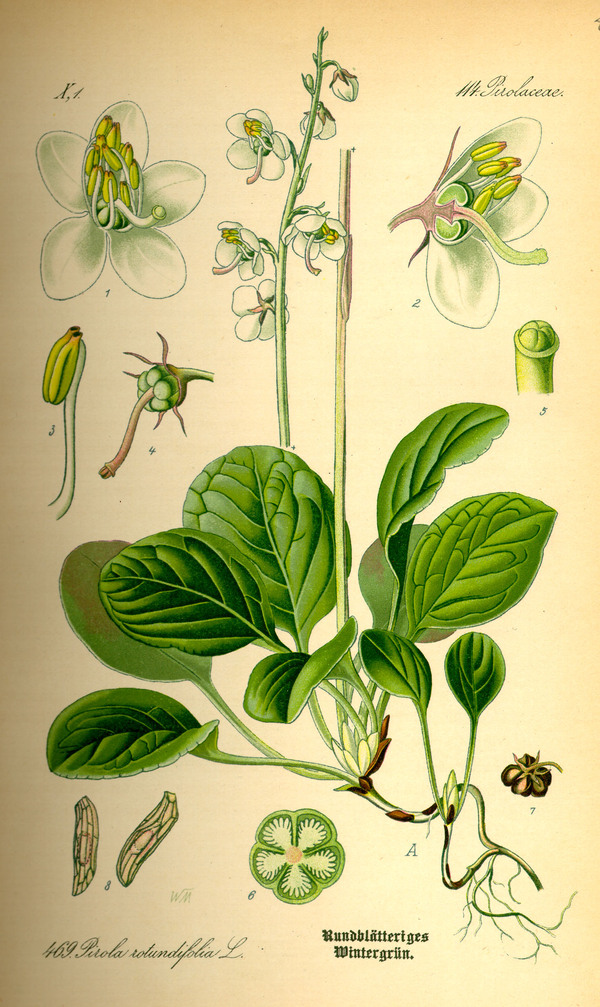
Common Name: Round Leaved Wintergreen | Scientific Name: Pyrola Rotundifolia

Family Name: Pyrolaceae
Introduction
Pyrola was used by the Eclectic Physicians to treat chronic skin conditions and general loss of vitality. The Eclectics learned of its health boosting capacity from the native Americans. A useful little herb, it has largely been forgotten.
Resources
Notes from the Eclectic Physicians
Notes from the Eclectic Physicians
1873: Scudder
This also is likely to prove a valuable remedy and deserves to be studied. It has marked tonic properties, and exerts an influence upon the urinary organs, relieving irritation. It is claimed to exert an influence upon the nervous system, and to have been successfully employed in convulsions and epilepsy.
1883: Scudder: (alterative)
Pyrola Rotundifolia, Thin-leaf or Pear-leaf Wintergreen, is astringent, alterative, tonic, antiseptic, anodyne an ddiuretic.
It has been found to exert an admirable influence in many diseases of a cutaneous character, especially in those attended with irritation of the surface or cutaneous inflammation. It seems to lessen the inflammation and itching upon the surface, and in a short time removes the disease: it should be used both internally and externally. In local inflammatory affections, as in burns, tumors, bruises, injuries, carbuncles and ulcers, in which there is pain, irritation, or a tendency to gangrene or mortification, it lessens the pain and local inflammation.
1898: Felter and Lloyd – PYROLA – PYROLA
Action, Medical Uses, and Dosage – Round-leaved pyrola is tonic, astringent, diuretic, and antispasmodic. Used in decoction, both internally and externally, in various cutaneous eruptions, likewise in a carcinomatous or scrofulous taint of the system, and in leucorrhoea, and some uterine diseases. As a local application, it will be found of service in sore throat, and ulcerations of the mouth, indolent ulcers, ophthalmia, etc., and forms an excellent soothing poultice for boils, carbuncles, and all painful tumors or swellings. The decoction, taken internally, is valuable in many urinary affections, relieving irritation, and is reputed very useful in gravel, hematuria, and ulceration of the bladder, and in some nervous diseases. The decoction and extract have been used with success in convulsions, and once formed a large portion of a popular nostrum for epilepsy. Dose of the decoction, 1 or 2 fluid ounces, 3 or 4 times a day; of the extract, from 2 to 5 grains. A strong tincture of the fresh plant (3viii to alcohol, 76 per cent, Oj) may be given in doses of from 1 to 30 drops.
Specific Indications and Uses – To relieve irritation of the urinary
Disclaimer: The author makes no guarantees as to the the curative effect of any herb or tonic on this website, and no visitor should attempt to use any of the information herein provided as treatment for any illness, weakness, or disease without first consulting a physician or health care provider. Pregnant women should always consult first with a health care professional before taking any treatment.
